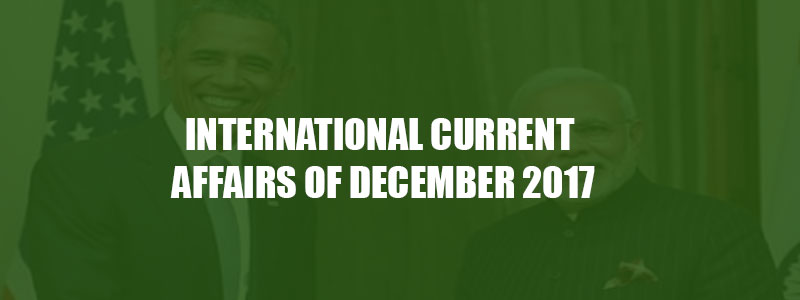International Current Affairs of December 2017
(COMPREHENSIVE CURRENT AFFAIRS FOR CDS/AFCAT/NDA OTHER DEFENCE EXAMINATIONS)
Defence examinations like CDS/AFCAT/NDA is scheduled very soon. Previous trend of these examinations shows that current affairs carries due weightage and directly or indirectly gets associated with other subjects also. Current affairs plays very important role in these examinations. In most of these examinations candidates can find 20 to 30 questions which definitely plays very important role. Major Kalshi Classes is providing you collection of international current affairs which are strategic in nature and affects India somewhere.
6 TH INTERNATIONAL TOURISM MART
Table of Contents
- The Ministry of Tourism, Government of India, in association with the North Eastern States is organising the “International Tourism Mart” (ITM) in Guwahati, Assam.
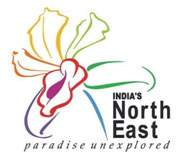
- The 6th International Tourism Mart, will put the spotlight on India’s “Act East Policy”, blossoming ties with ASEAN and the larger East Asia region, home to the world’s rapidly growing economies and India’s emerging tourism markets.
ABOUT INTERNATIONAL TOURISM MARTS
- The International Tourism Marts are organised in the North Eastern States on rotation basis. The earlier editions of this mart have been held in Guwahati, Tawang, Shillong, Gangtok and Imphal.
- This is the 6th International Tourism Mart and an annual event organised in the North Eastern region with the objective of highlighting the tourism potential of the region in the domestic and international markets. It brings together the tourism business fraternity and entrepreneurs from the eight North Eastern States.
BACKGROUND
- The North East Region of India comprising the states of Arunachal Pradesh, Assam, Manipur, Meghalaya, Mizoram, Nagaland, Tripura and Sikkim, is endowed with diverse tourist attractions and products. The varied topography of the region, its flora and fauna, the ethnic communities with their rich heritage of ancient traditions and lifestyles, its festivals, arts and crafts, make it a holiday destination waiting to be explored.
- Rooppur Nuclear Power Plant
- Bangladesh Prime Minister Sheikh Hasina recently inaugurated construction work on the much-awaited Rooppur Nuclear Power Plant in Ishwardi, located in the western part of the country. The plant is expected to add 2,400 MW of electricity to the national grid by 2024, helping the country meet its increasing demand for electricity.
- Implementation of the project: The mega project is being implemented by state-run Bangladesh Atomic Energy Commission with financial and technological support from Russia through its state nuclear agency, Rosatom.
INDIA RE-ELECTED TO INTERNATIONAL MARITIME COUNCIL
- India has been re-elected to the Council of the International Maritime Organization [IMO] under Category “B” at the recently held 30th session of the Assembly of the IMO in London. With re-election in IMO, India will continue to engage with the international maritime community to further her maritime interests and promote the welfare of her citizens.

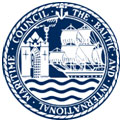
BACKGROUND:
- India has been one of the earliest members of the IMO, having ratified its Convention and joined it as a member-state in the year 1959. India has had the privilege of being elected to and serving the Council of the IMO, ever since it started functioning, and till date, except for two years for the period 1983-1984.
ABOUT IMO:
- The International Maritime Organization – is the United Nations specialized agency with responsibility for the safety and security of shipping and the prevention of marine pollution by ships.
- It has 171 Member States and three Associate Members.
- The IMO’s primary purpose is to develop and maintain a comprehensive regulatory framework for shipping and its remit today includes safety, environmental concerns, legal matters, technical co-operation, maritime security and the efficiency of shipping.
- IMO is governed by an assembly of members and is financially administered by a council of members elected from the assembly.
- The IMO’s structure comprises the Assembly, the Council, the Maritime Safety Committee, the Marine Environment Protection Committee, the Legal Committee, the Technical Cooperation Committee, and the secretariat, headed by a Secretary-General.
IMO COUNCIL:
- The IMO Council acts as the IMO’s Governing Body. It has a crucial role to play in deciding various matters in relation to the global shipping industry, including its work programme strategy and budget.
- Members of the Council consist of 40 member states, elected by its Assembly including 10 members in category A with the largest interest in providing international shipping services; 10 members in category B with the largest interest in international seaborne trade and 20 members in category C with special interests in maritime transport or navigation.
- India has been one of the earliest members of the IMO, having ratified its Convention and joined it as a member-state in the year 1959.
INSTC TO BE OPERATIONALIZED WITHIIN MONTH

- The International North South Transportation Corridor (INSTC) connecting Mumbai with St Petersburg and beyond – which has been 17 years in the making – is set to be operationalized from the middle of next month with the first consignment from India to Russia.
About INSTC:
- India, Iran and Russia had in September 2000 signed the INSTC agreement to build a corridor to provide the shortest multi-model transportation route linking the Indian Ocean and the Persian Gulf to the Caspian Sea via Iran and St Petersburg. From St Petersburg, North Europe is within easy reach via the Russian Federation. The estimated capacity of the corridor is 20-30 million tones of goods per year.
- The route primarily involvesmoving freight from India, Iran, Azerbaijan and Russia via ship, rail and road. The objective of the corridor is to increase trade connectivity between major cities such as Mumbai, Moscow, Tehran, Baku, Bandar Abbas, Astrakhan, Bandar Anzali and etc.
- SIGNIFICANCE OF THE CORIDOR: Conceived well before China’s Belt and Road Initiative (BRI), INSTC will not only help cut down on costs and time taken for transfer of goods from India to Russia and Europe via Iran but also provide an alternative connectivity initiative to countries in the Eurasian region. It will be India’s second corridor after the Chabahar Port to access resource rich Central Asia and its market.
BACKGROUND:
- The absence of viable surface transport connectivity is a serious impediment to trade with the Eurasian region. Currently, transport of goods between India and Russia mostly takes place through the sea route via Rotterdam to St Petersburg. In the case of the Central Asian region, goods are routed through China, Europe or Iran. The routes through China and Europe are long, expensive and time-consuming. Therefore, there is a need to have a logistics route that would be shorter, cheaper and faster.
GULF COOPERATION COUNCIL (GCC)
- The 38th Gulf Cooperation Council summit is being held in Kuwait. The summit comes at a delicate time after Saudi Arabia, Bahrain, the United Arab Emirates and Egypt all cut ties with Qatar in June, accusing Doha of backing extremism and fostering ties with Iran – charges that Qatar vehemently denies.
- Kuwait has played mediator and acted as a conduit for communication between the boycotting countries and Qatar.
- The United Arab Emirates (UAE) and Saudi Arabia have formed new economic and partnership group named Joint Cooperation Committee, separate from Gulf Cooperation Council (GCC).
WHAT IS GCC?
- The Gulf Cooperation Council (GCC) is a political and economic alliance of six countries in the Arabian Peninsula: Bahrain, Kuwait, Oman, Qatar, Saudi Arabia and the United Arab Emirates.
- Established in 1981, the GCC promotes economic, security, cultural and social cooperation between the six states and holds a summit every year to discuss cooperation and regional affairs.
- Due to their geographic proximity, similar political systems and common sociocultural stances, the immediate goal was for these countries to protect themselves from threats after the Iran-Iraq War.
STRUCTURE:
- The GCC comprises six main branches that carry out various tasks, from the preparation of meetings to the implementation of policies. They are- Supreme Council, Ministerial Council, Secretariat-General, Consultative Commission, Commission for the Settlement of Disputes and the Secretary-General.
ROLE OF GCC TODAY:
- Whether the GCC still has a relevant function and role in the region is questionable. Though it was created for the purpose of solidifying union ranks, the blockade imposed on Qatar by its neighbors has largely annulled these principles.
- The Gulf States have in the past differed in their views on several issues that have unfolded in the region over the past two decades. The role of the GCC has also been diminishing ever since the 2003 US-led invasion of Iraq, with the six states illustrating various approaches to the war and its consequences. This has been enhanced during the wave of protests that swept the Middle East in 2011, known as the Arab Spring. Saudi Arabia has gained a dominant role within the GCC today.
International Solar Alliance turned Treaty-based International Intergovernmental organization
- The International Solar Alliance (ISA) became treaty-based international intergovernmental organization on 6th December 2017 one month after Guinea became 15th country to ratify it.
- ISA is first treaty-based international government organisation to be based in India. So far, 46 countries have signed and 19 ratified Framework Agreement of ISA.
ABOUT ISA:
- The ISA is an Indian initiative, jointly launched by the Prime Minister NarendraModi and the president of France on 30 November 2015 in Paris, on the sidelines of COP-21, the UN climate conference. It aims at addressing obstacles to deployment at scale of solar energy through better harmonization and aggregation of demand from solar rich countries lying fully or partially between the tropics of Cancer and Capricorn.
- The ISA, headquartered in India, has its secretariat located in the campus of the National Institute of Solar Energy, Gurgaon, Haryana.
- The Paris Declaration, establishing the ISA, states that the countries share the collective ambition to undertake innovative and concerted efforts for reducing the cost of finance and cost of technology for immediate deployment solar generation assets.
US OFFICIALLY RECOGNIZED JERUSALEMAS ISRAEL’S CAPITAL

- In a major announcement, United States President Donald Trump has officially recognized Jerusalem as the capital of Israel night and has directed the State Department to initiate the process of moving the American embassy from Tel Aviv to Jerusalem, which many Arab leaders warn can trigger an upheaval in the already volatile Middle East. Israel considers the “complete and united Jerusalem” its capital, but Palestinians claim East Jerusalem for the capital of their future state.
WHAT IS THE INTERNATIONAL STATUS OF JERUSALEM?
- The walled Old City of Jerusalem, at just one square kilometer, is home to sites that are among the holiest in Judaism, Christianity, and Islam. Because of its unique cultural and religious significance, the UN General Assembly set aside Jerusalem to be a corpus separatum, or separated body, under UN trusteeship when it voted in 1947 to divide the British mandate of Palestine into two states, an Arab one and a Jewish one.
- That position remained the international consensus even after the partition plan itself was preempted by Israel’s declaration of independence in 1948 and the subsequent invasion by Arab powers. An armistice the following year divided the mandate along what has become known as the Green Line, which cuts through the middle of Jerusalem. Israel established its seat of government in the western half of the city, while, across a no man’s land lined with barbed wire, Jordan took control of the city’s eastern half, including the Old City.
- Israel captured East Jerusalem in 1967 and subsequently annexed it, redrawing its municipal borders to include surrounding Arab villages. In 1980, Israel’s parliament, the Knesset, designated the united city as Israel’s capital. By contrast, the West Bank, also captured in 1967, was not annexed; it remains under military occupation and Palestinians have partial self-government there, through the Palestinian Authority (PA). While Israel controls the city, the Oslo Accords, signed by Israel and the Palestine Liberation Organization (PLO) in 1993, stipulated that Jerusalem’s disposition would only be decided on in permanent-status negotiations between the parties. Other major issues under negotiation concern refugees’ right of return, security arrangements, borders, and mutual recognition.
WHO LIVES IN JERUSALEM?
- Jerusalem is home to nearly one million residents. West Jerusalem’s population of some 330,000 is almost entirely Jewish. The eastern half of the city, which comprises the Old City, Palestinian neighborhoods, and refugee camps, along with some newer Jewish settlements, is home to about 320,000 Arabs and 212,000 Jews. Unlike Palestinians who live elsewhere in Israel, most Palestinian East Jerusalemites have permanent residency, but not citizenship, since they do not recognize Israeli sovereignty over the city.
HOW DOES OTHER COUNTRIES REACTED?
- The Islamic world is outraged. Palestinian President Mahmoud Abbas has warned of “dangerous consequences”, Jordan’s King Abdullah II and Saudi King Salman have cautioned the US, Turkey has threatened to cut ties with Israel, Iran has declared that “the Palestinian nation will achieve victory”, China has said it “could sharpen regional conflict”, Egypt, the Arab League and several European nations have expressed grave reservations, and the Pope has pleaded for status quo. Hamas has threatened an intifada, and Hezbollah could react aggressively. India, friends with both Palestine and Israel, could face a quandary.
WAY AHEAD:
- Trump’s announcement is likely to compound a broader crisis of confidence among Palestinians that President Mahmoud Abbas, who has been in office for many years beyond his electoral mandate, can deliver statehood. Fatah and Hamas have called for protest.
BUENOS AIRES DECLARATION ON WOMEN AND TRADE
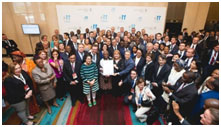
- For the first time in the history of the World Trade Organization, WTO members and observers have endorsed a collective initiative to increase the participation of women in trade. In order to help women reach their full potential in the world economy, 118 WTO members and observers agreed to support the Buenos Aires Declaration on Women and Trade, which seeks to remove barriers to, and foster, women’s economic empowerment.
- Supporting WTO members and observers have specifically agreed to explore and find ways to best tackle barriers to trade, lack of access to trade financing and sub-optimal participation of women in public procurement markets.
INDIA’S STAND:
- India, an influential WTO member, was among the minority group that chose not to endorse the move saying while it stoutly supports gender equality, it cannot concur with the view that gender is a trade-related issue. Agreeing to the proposition to link gender and trade could lead to advanced countries using their high standards in gender-related policies to not only curb exports from the developing world, but also indirectly restrict developing countries from incentivising their women citizens as part of measures to address developmental challenges.
- India also observed that gender-related discussions should take place at appropriate fora and not at the WTO, which is purely a trade-related body. Otherwise, it will set a precedent to bring in other non-trade issues such as labour and environment standards into the WTO’s ambit.
BACKGROUND
- Currently, many women worldwide stand on the sidelines of the economy. While women comprise about half of the global population, they generate only 37% of gross domestic product (GDP) and run only about a third of small and medium-sized enterprises. In some developing countries, female business ownership can dip as low as 3-6%. An International Trade Centre survey in 20 countries found that just one in five exporting companies is owned by women. In more than 155 countries, there is at least one law impeding economic opportunities for women. No country has managed to close the gender gap on economic participation and opportunity; progress is so slow it would take, at the current rate, 170 years to reach gender equality. It is also apparent that international trade and trade agreements affect women and men differently.
ABOUT BUENOS AIRES WOMEN AND TRADE DECLARATION:
- It was spearheaded by the governments of Iceland and Sierra Leone, as well as the International Trade Centre. It stemmed from efforts made by the Trade Impact Group of the International Gender Champions, a leadership network that brings female and male decision-makers together to break down gender barriers. The declaration seeks women’s economic empowerment by expeditiously removing barriers to trade.
INDIA, AUSTRALIA CALL FOR ‘OPEN’ ASIA-PACIFIC ZONE

- India and Australia highlighted the need to maintain the Asia-Pacific region as a “free” and “open” zone under recently held the “2+2” dialogue model which includes the foreign and defense secretaries of both sides. The discussion was the first meeting of this level since the two sides participated in the quadrilateral discussion for a new strategic partnership targeting the Asia-Pacific region.
NEED TO MAINTAIN THE ASIA-PACIFIC REGION AS A FREE AND OPEN ZONE:
- A free, open, prosperous and inclusive Indo-Pacific region serves the long-term interests of all countries in the region and of the world at large. Besides, there is a growing convergence of strategic perspectives between the India and Australia.
WAY AHEAD:
- Asia’s third largest economy, India – remains on the outside of the APEC grouping despite a membership request dating back more than 20 years. India in APEC would help offset the now-overwhelming influence of the Chinese economy, while also embedding India in a forum that would nudge it toward further economic reform.
WHO declared Gabon as polio-free Country
- The World Health Organization (WHO) has declared Gabon a “polio-free country”. This comes after lack of new reported or suspected cases in the central African country in recent times. But the UN health agency has recommended taking necessary steps to continue monitoring for possible signs of the disease.

Polio
- Polio is highly-infectious viral disease caused by the poliovirus. It mainly affects young children and can result in permanent paralysis. The virus is transmitted from person-to-person. It mainly spreads through the faecal-oral route (e.g. contaminated water or food).
- After entering body, it multiplies in the intestine, from where it can invade the nervous system and can cause paralysis. Initial symptoms of polio include fever, fatigue, headache, vomiting, stiffness in the neck, and pain in the limbs. In some cases, it causes permanent paralysis. There is no cure for polio virus, it can only be prevented by immunization.
Global Polio Prevalence
- Cases of polio have decreased by 99% since 1988, when it was endemic in 125 countries and 350,000 cases were recorded worldwide. Now the disease is endemic is prevalent only in two South Asian countries Afghanistan and Pakistan, where WHO recorded four cases two in each country this year. In 2016, there were 37 cases globally.
BBIN MOTOR PACT TO BE OPERATIONALIZED
- Pending ratification from Bhutan, India plans to operationalize BBIN motor vehicle agreement (MVA) with Bangladesh and Nepal for seamless movement of passenger and cargo vehicles.
BACKGROUND:
- Bangladesh, Bhutan, India and Nepal (BBIN) had signed a framework MVA in June 2015 to enable movement of passenger and cargo vehicles across borders among the four countries. Bhutan has not yet ratified the pact for its entry to come into force. However, Bhutan has given its consent for the BBIN MVA to enter into force amongst the other 3 countries i.e. Bangladesh, India and Nepal, who have already ratified it.
ABOUT BBIN AGREEMENT:
- The agreement encapsulates the spirit of economic integration emphasized in the SAARC Charter. The main objective of the agreement is to provide seamless people-to-people contact and enhance economic interaction by facilitating cross border movement of people and goods.
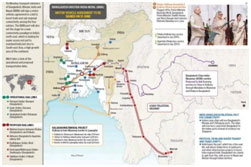
- It would permit unhindered movement of passenger and cargo vehicles among the four countries. Cargo vehicles do not have to be changed at the border, a practice that has prevailed until now.
- As per the agreement, member countries would allow vehicles registered in the other countries to enter their territory under certain terms and conditions. Customs and tariffs will be decided by the respective countries and these would be finalized at bilateral and trilateral forums.
- The BBIN agreement will promote safe, economical efficient and environmentally sound road transport in the sub-region and will further help each country in creating an institutional mechanism for regional integration.
India, Myanmar sign MoU for Rakhine State’s development
- India and Myanmar signed memorandum of understanding (MoU) aimed at developing Myanmar’s Rakhine state. It was signed by Foreign secretary S Jaishankar and Myanmar’s deputy minister for social welfare, relief and resettlement U SoeAung.
- The MoU comes in backdrop of massive migration of Rohingya refugees from violence-wracked Rakhine to Bangladesh. Human rights monitors have accused Myanmar’s military of atrocities against Rohingyas. The minority Rohingya community does not enjoy citizenshipin Myanmar. According to UN estimates, since August 2017 more than 6,00,000Rohingya refugees have fled to neighboring Bangladesh after incidents of violence and oppression in Rakhine State.
- This MoU is first government to government (G2G) agreement signed by Myanmar with a cooperation partner focussed on socio-economic development and livelihood initiatives in Rakhine State. It is intended to help Myanmar to achieve its objective of restoration of normalcy in Rakhine State and enable return of displaced persons.
- Rakhine is critical to strategic objectives of India in the region. Kaladan multimodal project, India’s dream connectivity project in region, originates from restive state. In addition, number of ongoing friendship projects also includes Sittwe port (capital of Rakhine province) and road from Paletwa–Zorinpui.
- Other key projects that are being built by India are Rhi-Tiddim road project, India-Myanmar-Thailand (IMT) Trilateral Highway road from Kalewa to Yargyi, project to build 69 bridges on Tamu–Kyigone–Kalewa road, Yamethin Police Training Centre and hospital projects.
India and Afghanistan launch 2nd air cargo route linking Kabul with Mumbai
- The second India-Afghanistan air cargo route linking Kabul to Mumbai was officially inaugurated at Hamid Karzai international airport in Kabul. It is expected to boost export of fresh fruits and medicinal plants from Afghanistan.
- The launch of second route follows the success of the first air corridor between both countries linking Kabul-New Delhi that was inaugurated by President Ashraf Ghani in June 2017.
Background
- Prime Minister NarendraModi and Afghanistan President Ashraf Ghani had decided on opening direct air corridor in 2016. The purpose of the air connectivity established through air freight corridor is to provide landlocked Afghanistan greater access to markets in India and also allow businessmen from Afghanistan to leverage India’s economic growth and trade networks for its benefit. Since June 2017, after the launch of first corridor, Afghanistan has exported various cargo including medical herbs fruits. So far, it has exported 1,640 tons fresh and dried fruits, carpets and medical herbs worth more than $20 million in 56 flights to India.
Significance
- This development has assumed significance at backdrop of Pakistan’s denial to use its land for trade between India and Afghanistan. The air freight corridor will be used by private sector in Afghanistan to increase its exports to vast Indian market by air with minimum costs. It will also enable the traders to circumvent the obstacles posed by Pakistan in the land route.
- India’s Humanitarian Assistance to Republic of Yemen
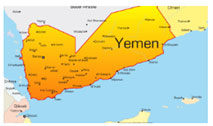
- The Government of India is providing medical assistance worth about US$ one million to Republic of Yemen in response to a request from the Yemeni government.
- As a part of its commitment to provide humanitarian assistance to Yemen, India has been a member of the ‘Friends of Yemen’ Group.
- India has earlier extended medical assistance to Yemen in April 2015. Additionally, India provided food assistance in the form of rice and wheat, each worth of US$ 2 million in August 2012 and March 2013 respectively.
Points to Remember
- Yemen is an Arab country in Western Asia at the southern end of the Arabian Peninsula.
- Sana’a is the capital of Yemen. Rial is the currency of Yemen.
- Abdrabbuh Mansur Hadi is the president of Yemen while Ahmed Obeid bin Daghr is the Prime Minister.
You can also get detailed analysis on these issues in the official current affairs magazine of Major Kalshi Classes.
For buying this click the link-






